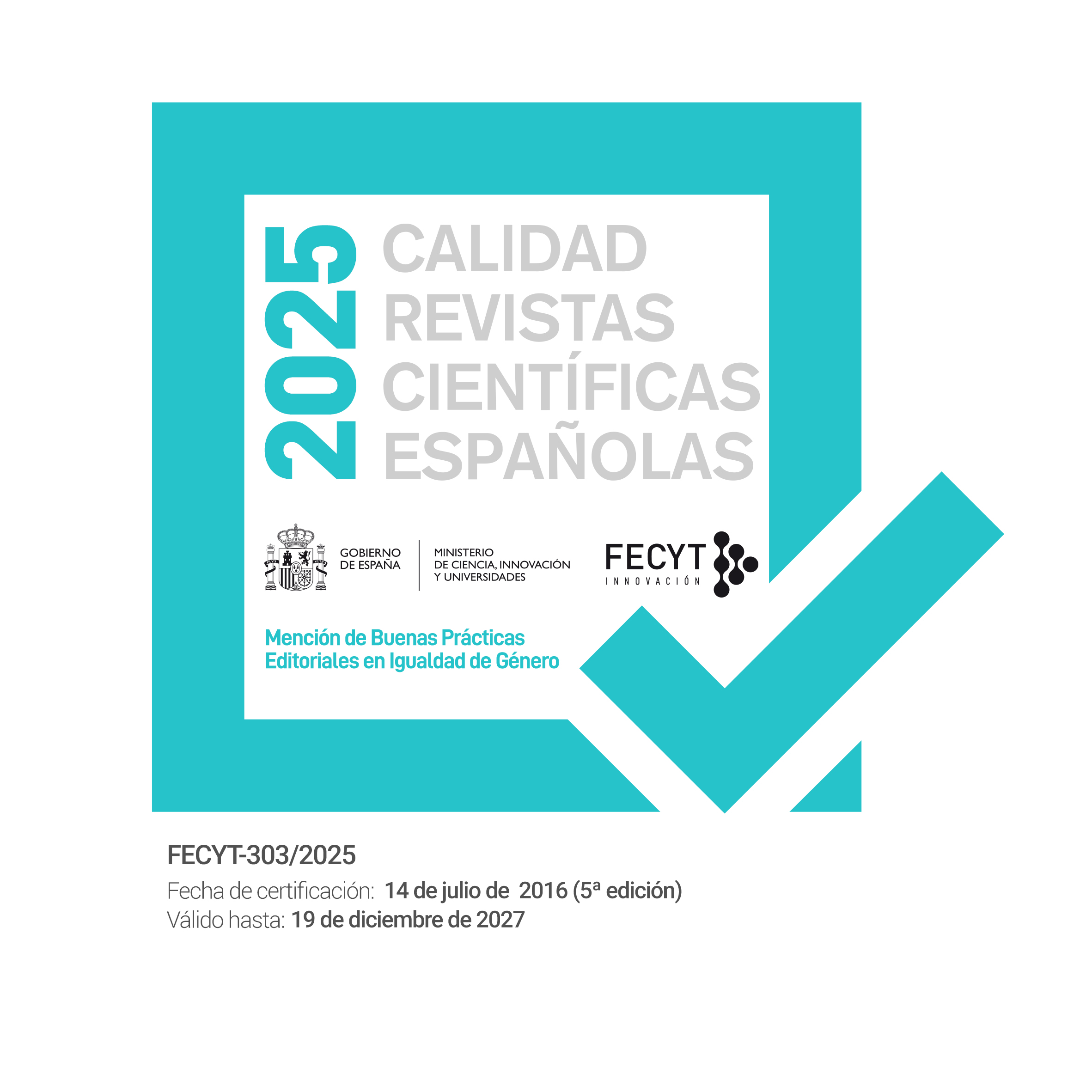Construyendo una tradición de artes liberales en India
DOI:
https://doi.org/10.5944/reec.39.2021.30042Palabras clave:
artes liberales, India, Educación Superior, innovación educativa, Educación Indígena, ÁfricaResumen
Las naciones poscoloniales a menudo luchan con el legado de los sistemas de educación superior construidos por y para el beneficio de las antiguas colonias. En la India, varios visionarios se han esforzado por diseñar nuevos enfoques de la educación superior que se adapten a su contexto único, mientras se inspiran en el modelo universitario de artes liberales de EE. UU. En un mundo interconectado, donde se requiere un alcance más amplio de comprensión para diseñar soluciones a los desafíos sociales, los jóvenes indios buscan una alternativa al modelo universitario especializado típico de la educación supe- rior india. Este artículo explora la práctica de las artes liberales en la India a través de tres preguntas: ¿Cómo han construido las universidades indias su propia tradición de artes liberales? ¿Cuales son las incertidumbres presentadas por estas universidades? ¿Qué pueden aprender los países africanos de estos ejemplos? Para ello, se recopiló datos a través de un análisis de documentos y entrevistas con fundadores, profesores, estu- diantes y exalumnos de tres nuevas universidades de artes liberales en la India. Como reflejo de los ideales del pensamiento indígena indio, las universidades empoderaron a los estudiantes para que abrieran su propio camino de autodescubrimiento mientras analizaban y desarrollaban un compromiso para mejorar el contexto indio. Al mismo tiempo, las universidades enfrentaron numerosas inquietudes: respondiendo a las pre- siones para producir graduados altamente empleables sin dejar de ser fieles a sus ideales institucionales, equilibrar las tradiciones occidentales y orientales, y fomentando una mayor inclusión manteniendo la sostenibilidad financiera. Los hallazgos son relevantes para los países africanos, que tienen una experiencia colonial compartida con la India y buscan crear nuevas tradiciones educativas culturalmente relevantes.
Descargas
Citas
Altbach, P. G. (2016). The Many Traditions of Liberal Arts—And Their Global Relevance.
International Higher Education, 84, 21–23.
Association of American Colleges & Universities. (2014, April 18). What Is Liberal Education? Association of American Colleges & Universities. https://www.aacu.org/leap/what-is-liberal-education
Association of American Colleges & Universities. (2020, April 30). Essential Learning Outcomes.. https://www.aacu.org/essential-learning-outcomes
Azim Premji University. (2014). Origin and Purpose. http://azimpremjiuniversity.edu.in:80/SitePages/origin-and-purpose.aspx
Azim Premji University. (2020a). Educational Philosophy. http://azimpremjiuniversity.edu.in:80/SitePages/educational-philosophy.aspx
Azim Premji University. (2020b). Vision and Mission. Retrieved October 8, 2020, from http://azimpremjiuniversity.edu.in:80/SitePages/vision-mission.aspx
Batra, P. (2020). Re-imagining curriculum in India: Charting a path beyond the pandemic. PROSPECTS. https://doi.org/10.1007/s11125-020-09518-6
Breneman, D. W. (1990). Are We Losing Our Liberal Arts Colleges?. AAHE
Bulletin, 43(2), 3–6.
Chai, W. Y. (2016). Adapting the Western Model of Liberal Arts Education in China: The Cases of Fudan University and Lingnan University. In I. Jung, M.
Nishimura, & T. Sasao (Eds.), Liberal Arts Education and Colleges in East Asia: Possibilities and Challenges in the Global Age (pp. 75–86). Springer. https://doi.org/10.1007/978-981-10-0513-8_7
Cohn, S. (2019, December 3). The other college debt crisis: Schools are going broke. CNBC. https://www.cnbc.com/2019/12/03/the-other-college-debt-crisis-schools-are-going-broke.html
Goyal, M. (2014, May 11). Ashoka University: India’s answer to the Ivy League, promises ‘world-class’ liberal arts education—The Economic Times. The Economic Times. https://economictimes.indiatimes.com/industry/services/education/ashoka-university-indias-answer-to-the-ivy-league-promises-world-class-liberal-arts-education/articleshow/34936735.cms
Gupta, U. D. (2002). In Pursuit of a Different Freedom: Tagore’s world university at Santiniketan. India International Centre Quarterly, 29(3/4), 25–38.
Ikeda, D. (1992). Gandhism Speech at National Museum, New Delhi.
https://www.daisakuikeda.org/sub/resources/works/lect/lect-03.html
Kazmin, A. (2018, March 8). Ashoka University: Ivy League, Indian-style. Financial Times. https://www.ft.com/content/b8fabc8c-1559-11e8-9c33-02f893d608c2
Krishnamurti, J. (1953). Education and the Significance of Life. HarperCollins.
Mohanty, S. B. (2019). Theory and practice of integral education. UNIVERSITY NEWS, 57(33), 11–16.
Mukherjee, B. (2020, January 14). Liberal Arts Studies at Ashoka University – Q & A With Saikat Majumdar, Professor of English and Creative Writing,
Ashoka University. https://www.stoodnt.com/blog/liberal-arts-studies-ashoka-university/
Nanda, P. K. (2020, September 2). Only 2 Indian varsities among the world’s top 400: THE World University Rankings. Mint. https://www.livemint.com/education/news/only-2-indian-varsities-among-the-world-s-top-400-the-world-university-rankings-11599048715517.html
Nandrajog, S. (2016, September 27). Student Life In Ashoka University: It Feels Like A Second Home. Youth Ki Awaaz. https://www.youthkiawaaz.com/2016/09/life-in-ashoka-university/
Nishimura, M. (2016). Liberal Arts for a New Japan: The Case of the International Christian University. In I. Jung, M. Nishimura, & T. Sasao (Eds.), Liberal Arts Education and Colleges in East Asia: Possibilities and Challenges in the Global Age (pp. 51–62). Springer. https://doi.org/10.1007/978-981-10-0513-8_5
Rao, S. (2020, June 25). Ashoka University - Of the elite, for the elite, by the elite. The
ArmChair Journal. https://armchairjournal.com/ashoka-university-of-the-elite-for-the-elite-by-the-elite/
Sra, G. (2015, March 26). India’s New Ivy League. Open The Magazine. https://openthemagazine.com/features/india/indias-new-ivy-league/
Sykes, M. (1988). The story of Nai Talim.
Symbiosis International University. (2020). Symbiosis International (Deemed University) | India’s Leading University for Undergraduate and Post Graduate Programs | Indian Universities. https://siu.edu.in/symbiosis-international-university.php
Tagore, R. (1924). The parrot’s training.
Thompson, M., & Jung, I. (2016). Making the Global Local: Twenty Years at Miyazaki International College, Japan. In I. Jung, M. Nishimura, & T. Sasao (Eds.), Liberal Arts Education and Colleges in East Asia: Possibilities and Challenges in the Global Age (pp. 63–73). Springer. https://doi.org/10.1007/978-981-10-0513-8_6
World Bank. (2017). Higher Education for Development: An Evaluation of the World Bank Group’s Support.
Yang, R. (2016). The East-West Axis? Liberal Arts Education in East Asian Universities. In I. Jung, M. Nishimura, & T. Sasao (Eds.), Liberal Arts Education and Colleges in East Asia: Possibilities and Challenges in the Global Age (pp. 27–37). Springer. https://doi.org/10.1007/978-981-10-0513-8_3
Descargas
Publicado
Cómo citar
Número
Sección
Licencia
Derechos de autor 2021 Revista Española de Educación Comparada

Esta obra está bajo una licencia internacional Creative Commons Atribución-NoComercial 4.0.

Acknowledgement – Non Commercial (by-nc): Generation of derivated Works is allowed as long as a commercial use is not developed. The original work cannot be used with commercial aims.
This journal does not apply any fee to the authors by the filing or processing of articles.












